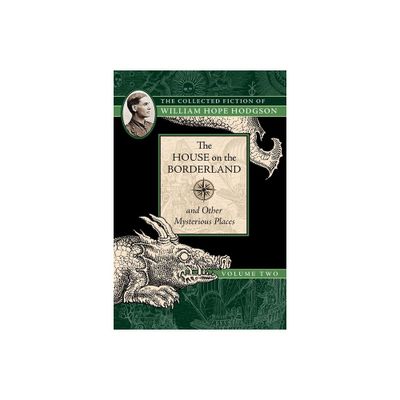Home
William Hope Hodgson - The Voice of the Ocean: "A light to souls in need''
Loading Inventory...
Barnes and Noble
William Hope Hodgson - The Voice of the Ocean: "A light to souls in need''
Current price: $10.24


Barnes and Noble
William Hope Hodgson - The Voice of the Ocean: "A light to souls in need''
Current price: $10.24
Loading Inventory...
Size: OS
*Product Information may vary - to confirm product availability, pricing, and additional information please contact Barnes and Noble
William Hope Hodgson was born on 15th November 1877 in Blackmore End near Braintree in Essex, the son of an Anglican priest and the second of 12 children.
By the time he was 13 Hodgson ran away from his boarding school to become a sailor. He was caught and returned to his family, but was eventually allowed to be apprenticed for 4 years as a cabin boy. Bullying at sea caused him to take up self-defence through body-building which he would eventually use to start an on-shore business. He was also a keen photographer.
In 1899, at age 22, he opened a School of Physical Culture in Blackburn "the inventor and teacher of a system that will cure indigestion". Hodgson soon found that he could not earn a living running his business and shut it down. He began writing articles on health but it was a limited market and so he turned to fiction, first publishing a short story in 1904. Hodgson also began to give paid lectures, illustrated with his photography, about his experiences at sea.
He wrote a number of poems, with only a handful published during his lifetime, but continued to sell short stories to American and British magazines throughout his career, carefully managing the rights to maximize his revenue.
Hodgson still lived with his mother and despite the critical success of his novels, he remained relatively poor. To alleviate this he began working on the first of his recurring characters, Thomas Carnacki, an occult detective.
In 1912, Hodgson married Betty Farnworth, who wrote the "agony" column for the magazine Home Notes. They moved to the south of France, with its cheaper cost of living and there he continued to publish across genres, although financial security still to eluded him. With the outbreak of war they returned to England.
Hodgson joined the University of London's Officers' Training Corps. In 1916, he was thrown from a horse and received a mandatory discharge. He returned to writing but recovered sufficiently to re-enlist.
William Hope Hodgson was killed at the age of 40 by the direct impact of a shell at the Fourth Battle of Ypres in April 1918.
By the time he was 13 Hodgson ran away from his boarding school to become a sailor. He was caught and returned to his family, but was eventually allowed to be apprenticed for 4 years as a cabin boy. Bullying at sea caused him to take up self-defence through body-building which he would eventually use to start an on-shore business. He was also a keen photographer.
In 1899, at age 22, he opened a School of Physical Culture in Blackburn "the inventor and teacher of a system that will cure indigestion". Hodgson soon found that he could not earn a living running his business and shut it down. He began writing articles on health but it was a limited market and so he turned to fiction, first publishing a short story in 1904. Hodgson also began to give paid lectures, illustrated with his photography, about his experiences at sea.
He wrote a number of poems, with only a handful published during his lifetime, but continued to sell short stories to American and British magazines throughout his career, carefully managing the rights to maximize his revenue.
Hodgson still lived with his mother and despite the critical success of his novels, he remained relatively poor. To alleviate this he began working on the first of his recurring characters, Thomas Carnacki, an occult detective.
In 1912, Hodgson married Betty Farnworth, who wrote the "agony" column for the magazine Home Notes. They moved to the south of France, with its cheaper cost of living and there he continued to publish across genres, although financial security still to eluded him. With the outbreak of war they returned to England.
Hodgson joined the University of London's Officers' Training Corps. In 1916, he was thrown from a horse and received a mandatory discharge. He returned to writing but recovered sufficiently to re-enlist.
William Hope Hodgson was killed at the age of 40 by the direct impact of a shell at the Fourth Battle of Ypres in April 1918.


















